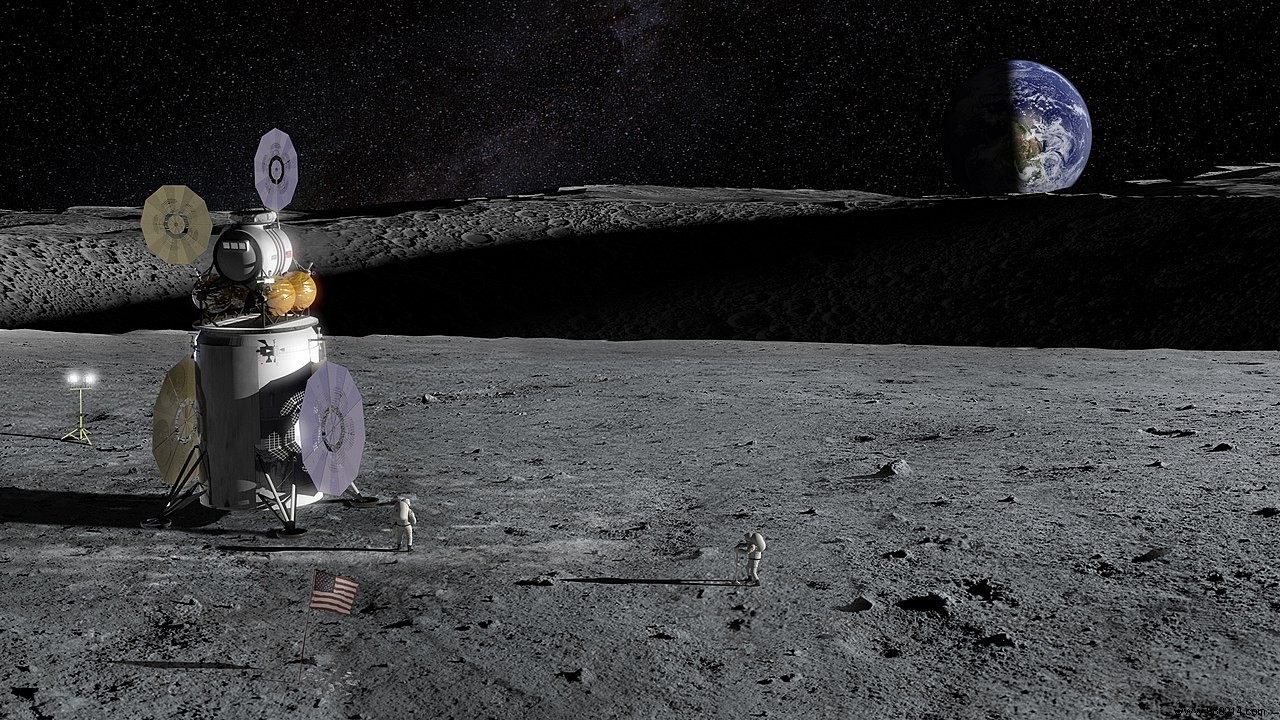The return of American astronauts to the Moon, scheduled for 2024, will cost NASA no less than $28 billion, including $16 billion for the lander.
NASA officials Jim Bridenstine, Kathy Lueders, James Reuter and Thomas Zurbuchen provided some details about the Artemis program, as part of a press conference held on Monday. First important point:the agency ensures that it is still counting on 2024 to land the first woman and the first man on the Moon since the Apollo missions.
But to meet the deadline, you'll have to get your hands on the wallet. This return to lunar soil should indeed cost no less than 28 billion dollars over the next five years, of which 16 billion for the lander. It remains to be seen whether the Congress, which will be renewed in the general elections of November 3, will agree to finance these amounts.
If Congress votes the first $3.2 billion for the mooner by Christmas, "we'll still be in the market for a 2024 moon landing" , confirmed Jim Bridenstine.
Technically, NASA also states that its new heavy launcher – the Space Launch System (SLS) – is in progress. Its first stage and its four attached motors will soon undergo a final series of analyzes which will culminate in a hot test this fall. The Orion capsule, supposed to transport astronauts to the Moon, is already finished. Both ships are therefore “closer than ever to their first integrated launch” , assures NASA.
After its successful hot-firing test, the SLS main stage will move to Kennedy Space Center, Florida. The Orion capsule will then be capped over it. Two test flights are planned before the 2024 deadline. The first mission – known as Artemis I – is on track for launch in 2021 . It will be uninhabited.
The Artemis II mission, which this time involves sending a crew around the Moon, will normally be launched in 2023 . Again, NASA provides some clarification. Shortly after the Orion capsule separates from the SLS's interim cryogenic propulsion stage, astronauts will manually pilot the craft as it approaches and retreats from the scene (lunar surface).
This mission will evaluate the manipulation qualities of Orion, as well as the associated software, with the aim of preparing Artemis III. Also note that in the meantime, NASA will launch several robotic missions to the Moon from 2021 (two per year), with the aim of delivering the necessary instrumentation to astronauts upon their arrival in 2024.

Regarding Artemis III, there is always talk of landing at the South Pole (even if NASA has already mentioned a plan B). During this new lunar stay, which should normally last a week , the astronauts will perform several spacewalks to collect samples and conduct scientific experiments.
As a reminder, the American agency is currently developing a project called Lunar Orbital Platform-Gateway . As its name suggests, the idea will be to place a station in lunar orbit. The main purpose of this gateway will be to serve as a hub between the Earth and our satellite. Astronauts will also be able to stay there between two missions on the lunar surface. Eventually, the station could also serve as a "relay point" for future Mars missions.
As part of Artemis III, it is not yet known if astronauts will use this walkway. It may indeed still be under construction by 2024. If this is the case, the crew will then board the lander directly from the Orion capsule. On the other hand, it is expected that the crew of Artemis IV, composed of four astronauts, will dock at this footbridge. Two of them will then remain aboard the outpost, while the other two will return to the lunar surface.